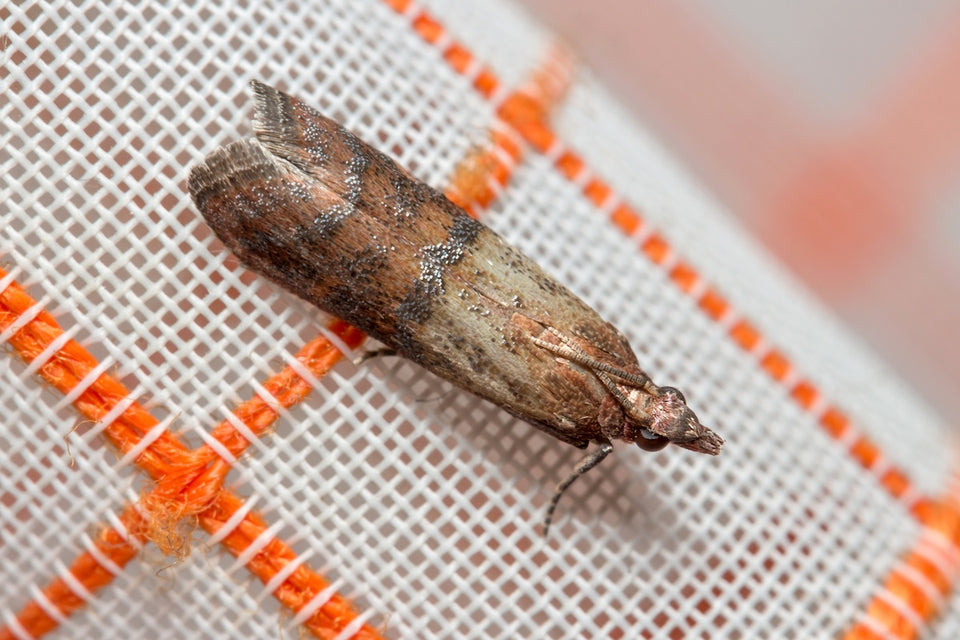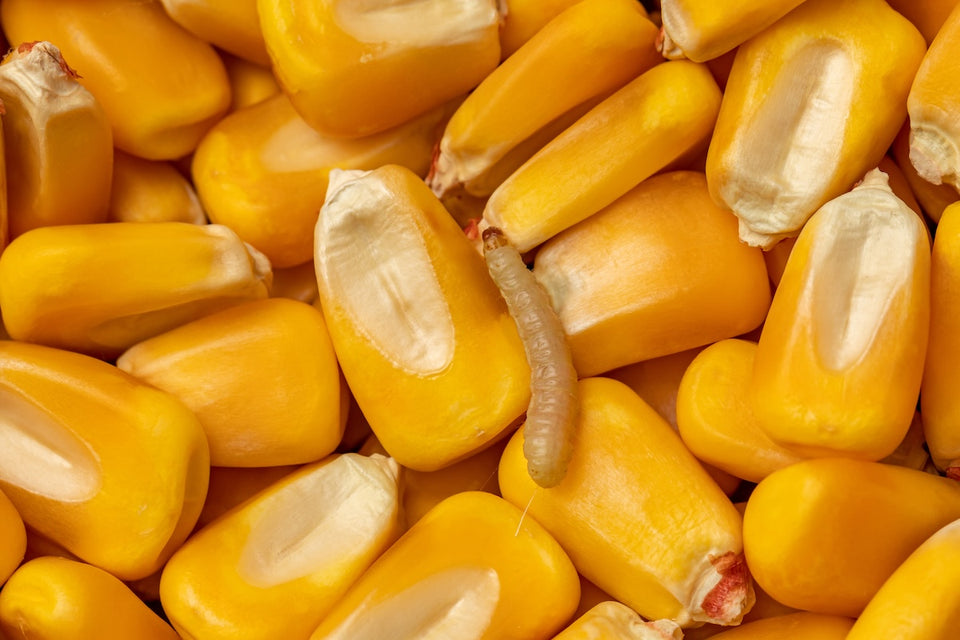How to Stop Pantry Moth Infestations as Temperatures Drop

Spotting Pantry Moths as the Weather Cools
When summer ends, most pests slow down, but not Pantry Moths. While their numbers often surge in spring and summer, infestations frequently continue into the colder months. Heated homes, busy kitchens, and freshly stocked cupboards create the perfect environment for eggs to hatch and larvae to keep feeding. If you want to protect your food through the season ahead, now is the time to act.
By the time temperatures dip, many infestations that began earlier in the year are fully established. Adult moths may be seen fluttering near ceilings or hovering close to cupboards in the evening. More telling, however, are the signs left by the hungry larvae, which are responsible for the damage to all your dry foodstuffs. Webbing inside packages, flour or grains clumping together, and small caterpillar-like larvae are all indicators that cupboard staples are at risk.

Exposed packages are very vulnerable but even unopened packaging may not be safe. Pantry Moth Larvae can chew through thin cardboard and plastic film, which allows infestations to spread from one contaminated packet into nearby food products if not addressed quickly.
Why Infestations Keep Going Beyond Summer
Although moth numbers peak in warmer months, the real issue is their ability to persist. A single female can lay hundreds of eggs, and those eggs are almost invisible to the naked eye. When homes are kept warm with central heating, larvae development does not stop. This means they can continue feeding, pupating, and eventually emerging as adults long after outdoor conditions would normally slow them down.
The foods most at risk are the ones people naturally stockpile during this time of year — flour, rice, cereals, nuts, dried fruit, pet food and even chocolate.
The Pantry Moth Life Cycle Explained

One reason infestations are so difficult to eliminate is the resilience of the Pantry Moth life cycle. Eggs, which measure less than half a millimetre, can be laid directly on food surfaces or hidden in packaging seams. These hatch into larvae within a matter of days, and it is the larvae that cause all the damage, feeding continuously for several weeks. Once fully grown, they spin silken cocoons and pupate, remaining hidden in cracks, cupboard corners, or the folds of packaging. From there, adult moths emerge to begin the cycle again. Depending on temperature, a complete life cycle can take as little as six weeks, which means multiple overlapping generations can exist in a single season. This rapid turnover explains why infestations feel relentless if every stage is not addressed.
How to Protect Your Kitchen
The best protection is a combination of careful storage, cleaning, and monitoring. Transfer dry goods into airtight containers made from glass, metal, or thick plastic, which are far more secure than thin supermarket packaging. Once food is sealed, moths cannot lay eggs inside and larvae cannot escape to spread.
Cleaning cupboards thoroughly is just as important. Wipe shelves with a mild detergent, paying close attention to cracks and corners where eggs can be hidden. Vacuum drawer edges and the spaces behind appliances, and dispose of the vacuum contents immediately to avoid recontamination.

Monitoring with Pantry Moth Traps provides the final layer of defence. These traps target adult males, reducing breeding and alerting you to ongoing activity. At this time of year, when cupboards are refilled and conditions remain ideal for moths, traps give early warning before the problem spreads further. Traps should be placed in or near cupboards where foodstuffs are stored and replaced every eight weeks to stay effective.
Staying Protected Year-Round
Dealing with Pantry Moths once does not guarantee they will not return. Eggs can remain hidden and infestations can flare up again if vigilance drops. This is why year-round prevention matters. Regularly check food packaging, clean storage spaces, and keep traps in place even when you don’t see adult moths.
Because moths can enter homes through supermarket packaging, bird seed, or pet food, it is wise to inspect new purchases before adding them to your pantry. Freezing dry goods for a few days before long-term storage can also reduce the risk of introducing eggs or larvae into your cupboards.
Final Word
Pantry Moths may be most active in spring and summer, but modern living conditions mean they remain a risk well into the cooler months. With sealed storage, clean cupboards, and effective monitoring, you can protect your kitchen and keep seasonal food supplies safe.

At MothPrevention, we have supported over 250,000 households in controlling Pantry Moths effectively. With the right steps in place, you can enjoy cooking and comfort food this season without worrying about pests in your cupboards.
About MothPrevention
MothPrevention® speak to customers every day about their clothes moth issues - clothes moths are a species that are ever increasing and that can cause significant damage to clothes, carpets and other home textiles.
To date, we’ve helped over 250,000 customers deal with their moth problems. We have developed professional grade solutions including proprietary pheromones and trap design, not available from anybody else in the USA.





